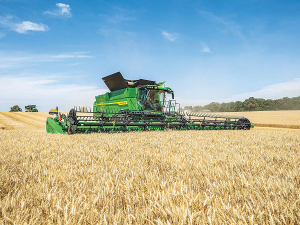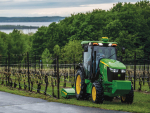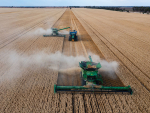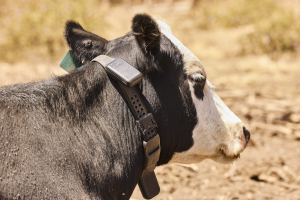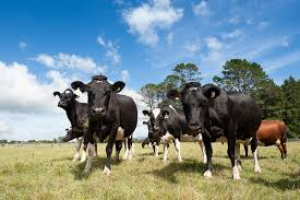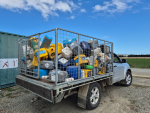John Deere says its S Series combines have been redesigned and optimised with innovative technologies to build on their proven performance in Australian and New Zealand conditions.
John Deere production systems manager Ben Kelly says the updates will deliver productivity gains of up to 20% - with 10% less fuel used.
The productivity gains are said to have been achieved by a re-designed grain loss sensing system that will provide more accurate grain loss measurements, alongside new automation features that will take operator performance to the next level.
Under the hood, new engines will deliver more fuel efficiency, utilising either the JD14 13.6L engine, or the JD9 9L engine, Tier 3 configuration.
The new S7 Series family includes the S7 600, with 333hp rated/367hp max power, the S7 700 with 402hp rated/460hp max power, the S7 800 with 473hp rated/ 540hp max power and the flagship S7 900 with 543hp rated/617hp max power.
“Input costs, including fuel, are one of the most challenging elements of agricultural production, so we know the 10% fuel savings offered will be welcomed by farming and contracting enterprises,” Kelly adds.
The S7 Series also offers a new residue management system featuring straight knives, a mechanical tailboard drive and the available Premium PowerCast tailboard. This allows the machines to deliver more consistently sized and spread fine – or extra-fine cut residue – up to 13.7m (45 ft), while drawing up to 15 fewer horsepower.
A new, adjustable unloading spout ensures grain is going into the bin and not on the ground. This is complemented by a new cross-auger shutoff feature that completely empties the unloading system after the grain tank is emptied. This reduces weight in the unloading auger and wear on the associated drive belts.
The new harvesters also feature an improved grain loss monitoring system in base equipment. This is said to be up to three times more accurate than the previous system, detecting losses at the rear of the cleaning shoes and the separator.
The new S7 Series has also been designed to be among the most comfortable combine harvesters ever produced. They come with a new operator station offering more storage space for food and drink, a more comfortable seat and more glass for better visibility. This is all designed to help the operator remain alert and focused through even the longest days of harvest.
Along with the operator comfort upgrades, the base S7 Series will be equipped with the G5PLUS Command- CenterTM, the Integrated StarFireTM 7500 receiver, JDLink modem and new corner post display, paving the way for new automation features and functionality into the future.
The Model-Year 2025 S7 Series and X9 Series combines have three technology packages operators can choose from, including Select, Premium and Ultimate.
At the top end, the Ultimate package includes Ground Speed Automation to manage the combine’s speed based on operator inputs for grain loss, engine load and rotor pressure to maintain consistent throughput.
The Harvest Settings Automation feature automatically adjusts rotor speed, fan speed, and concave, chaffer and sieve clearances.
This is all based upon acceptable limits for grain loss, foreign material, and broken grain, to deliver a more consistent and higher quality harvest, irrespective of operator skill level.
Predictive Ground Speed Automation uses ground speed plus two forward-looking cameras, to visually assess changing crop conditions and a pre-harvest satellite image to generate a predictive field map, merging the two inputs to proactively manage ground speed and maximise combine throughput.
“These automation packages will help maintain peak performance throughput all day long regardless of variations in crop yield, down crop, or even with less experienced operators, maximising productivity at harvest,” Kelly claims.





